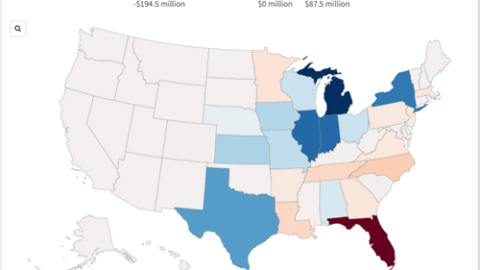Early disconnect between industry rhetoric and actions under the new TSCA?
Richard Denison, Ph.D., is a Lead Senior Scientist.
It was more than a bit heartening that, even post-election, chemical industry representatives have been publicly urging that the Environmental Protection Agency’s (EPA) implementation of the new Toxic Substances Control Act (TSCA) should continue apace.
So it pains me greatly to be reading that some in industry are aggressively pressing the Office of Management and Budget (OMB) to block at least one of EPA’s proposals to restrict certain very high-risk uses of trichloroethylene (TCE), which focuses on TCE’s use in commercial vapor degreasing operations. As reported late last week by Inside EPA (subscription required), industry representatives have asked OMB not to even allow EPA to issue its proposal for public comment, despite the fact that the industry and the rest of the public have yet to see it.
These are the first risk reduction actions EPA is proposing to take under the Lautenberg Act, which passed earlier this year with strong bipartisan support. Industry supported the new law, saying it accepted the need to give EPA stronger authority to identify and restrict dangerous uses of chemicals in order to help restore public confidence in the nation’s chemical safety system. So why are some now seeking to block the very first actions taken under the new law? This type of behavior— fighting even limited steps by EPA to address even the riskiest of chemicals—is what brought about this crisis in confidence in the first place.
Bear in mind that TCE is a very nasty chemical. A 2013 review of thousands of scientific studies by EPA scientists concluded that TCE is carcinogenic to humans by all routes of exposure and poses additional hazards, including immunotoxicity, neurotoxicity, and adverse effects on the developing heart. TCE’s strong link to cancer has been confirmed by the International Agency for Research on Cancer (IARC), EPA’s Integrated Risk Information System (IRIS), the Agency for Toxic Substances and Disease Registry (ATSDR), and the National Toxicology Program (NTP).
We’ve blogged earlier about EPA’s TCE risk assessment – the first issued by EPA’s toxics office in three decades – and its initial efforts to address the extremely high risks identified in that assessment. Earlier this year, EPA sent two draft proposed rules to OMB that would restrict those uses of TCE that EPA found to pose excessive risks to workers and consumers:
- One, sent to OMB on July 27, is aimed at TCE’s use as a spotting agent in dry cleaning and in commercial and consumer aerosol spray degreasers.
- The other, sent to OMB on September 30, is aimed at TCE’s use in commercial vapor degreasing.
Both proposals remain under OMB review as of this writing. And now it appears industry representatives are urging OMB to block at least the latter proposal from going forward even for public comment.
Lest there be any doubt about the need to restrict these uses, consider the breadth and magnitude of risks identified by EPA:
- Acute developmental effects: Exposures that exceed, often by large margins, the level identified as “safe” for all or most exposure scenarios for workers, bystanders and consumers. This is the case even for low-end exposure estimates in settings that employ local exhaust ventilation. Exceedances range from 2-170,000 times the “safe” level.
- Cancer:
- Degreasing: Risk exceeding 1 in 10,000 for all exposure scenarios, even including low-end exposure estimates in settings that employ local exhaust ventilation.
- Spot cleaners: Risk exceeding 1 in 10,000 for most (5 of 8) exposure scenarios, with all scenarios exceeding 1 in 1,000,000 and all but one exceeding 1 in 100,000.
- Chronic non-cancer effects:
- Developmental, kidney, immuno, autoimmune, reproductive and neurotoxicity:
- Degreasers: Exposures that exceed, often by large margins, the level identified as “safe” for all exposure scenarios for workers and most for bystanders. This is the case even for low-end exposure estimates in settings that employ local exhaust ventilation. Exceedances range from 2 to 140,000 times the “safe” level.
- Spot cleaners: Exposures that exceed, often by large margins, the level identified as “safe” for nearly all exposure scenarios for workers and most for bystanders. An exception is low-end exposure estimates in settings that employ local exhaust ventilation. Exceedances range from 1.1 to 14,300 times the “safe” level.
- Developmental, kidney, immuno, autoimmune, reproductive and neurotoxicity:
Given the huge magnitude of these risks, EPA’s proposal to restrict these uses should be a no-brainer. One might have hoped that industry would have accepted this, even out of its own self-interest.
If industry is serious about rebuilding the public’s trust and confidence in their chemicals and products containing them, it needs to stop attacking EPA at every turn and let it do its job.












